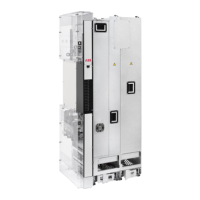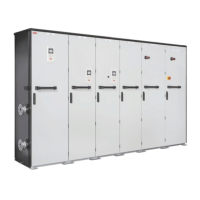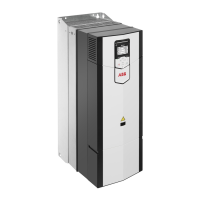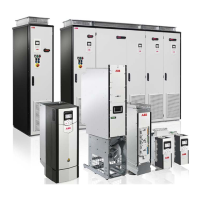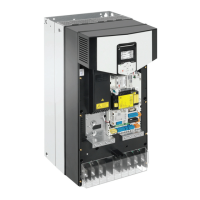Not allowed power cable types
Use as motor cablingUse as input power cablingCable type
NoNo
Symmetrical shielded cable with in-
dividual shields for each phase
conductor
■ Additional guidelines, North America
ABB recommends the use of conduit for power wiring to the drive and between the drive
and the motor(s). Due to the variety of application needs, metallic and non-metallic conduit
can be used. ABB prefers the use of metallic conduit.
The following table shows examples of various materials and methods for wiring the drive
in the intended application. See NEC 70 along with state and local codes for the appropriate
materials for your application.
In all applications, ABB prefers the use of symmetrical shielded VFD cable between drive
and motor(s).
NotesWiring method
Conduit - Metallic
1) 2)
Prefer symmetrical shielded VFD cable.Electrical metallic tubing: Type EMT
Use separate conduit run for each motor.
Rigid metal conduit: Type RMC
Do not run input power wiring and motor wiring in the
same conduit.
Liquid-tight flexible metal electrical conduit: Type LFMC
Conduit - Non-metallic
2)
3)
Prefer symmetrical shielded VFD cable.
Liquid-tight flexible non-metallic conduit: Type LFNC
Use separate conduit run for each motor.
Do not run input power wiring and motor wiring in the
same conduit.
Wireways
2)
Prefer symmetrical shielded VFD cable.
Metallic
Separate motor wiring from input power wiring and
other low voltage wiring.
Do not run outputs of multiple drives parallel. Bundle
each cable (wiring) together and use separators where
possible.
Free air
2)
Prefer symmetrical shielded VFD cable.
Enclosures, air handlers, etc.
Allowed internally in enclosures when in accordance
with UL.
1)
Metallic conduit may be used as an additional ground path, provided this path is a solid path capable of handling ground
currents.
2)
See NFPA NEC 70, UL, and local codes for your application.
3)
Non-metallic conduit use underground is allowed; however, these installations inherently have an increased chance for
nuisance problems due to the potential for water/moisture in the conduit. Water/moisture in the conduit increases the
likelihood of VFD faults or warnings. Proper installation is required to make sure there is no intrusion of water/moisture.
80 Guidelines for planning the electrical installation
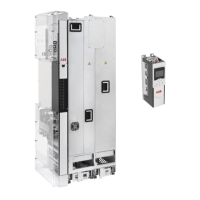
